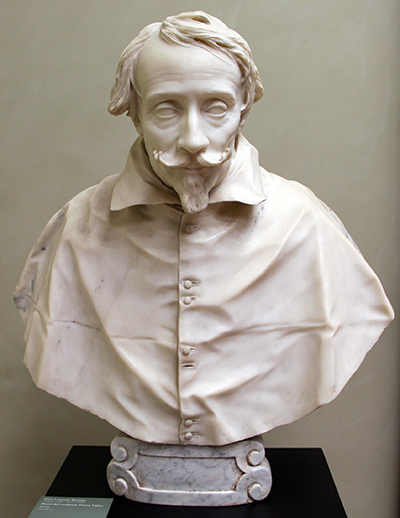It could be said that sculpture was in the blood for Gian Lorenzo Bernini who was instructed in this art by his father from a very early age and went on to surpass him in scope and talent.
One of the best sculptors of his generation he began to receive commissions from a precocious age. When Bernini's father moved the family to Rome for work he had been commissioned to undertake, this set the scene for the young Gian Lorenzo to be placed at the epicentre of some of the great art and sculptural influences of his time and to start to make a name for himself in his own right.
Although Bernini excelled in many areas including painting and architecture, it was his dramatic and intricate sculptures for which he is most remembered, including the religious bust of Cardinal Pietro Valier which was commissioned in 1627 with one of another cardinal – Agostino. Such was his influence that art historians such as Howard Hibbard have remarked that it is difficult, if not impossible, to compare Bernini to anyone else in his field at this time, and his sculptures and paintings became highly sought after throughout Italy and beyond.
Many of Bernini’s commissions came from leading papal figures including his first one from Cardinal Scipione Borghese, and in 1621 a knighthood was awarded to Bernini at the age of only 23. No doubt Bernini’s devout Catholicism also served to bring him to the attention of these religious figures in conjunction with his prodigious talent, and he was also commissioned by Pope Urban VIII.
Like many of his Renaissance contemporaries, Bernini used a Mannerist style of art which involved a move away from preconceived medieval ideas and concepts, and in the case of his sculpture incorporated a flowing, dynamic style that can be viewed and contemplated from all angles. Bernini is also credited with the emergence of the Baroque style of art, which is characterised by a certain grandeur and magnificence in conjunction with exaggerated movement and emotions and a great clarity of detail. Examples of this style can be seen in some of Bernini’s most famous sculptures such as Apollo and Daphne and The Ecstasy of Saint Teresa.
In the sculpture of Cardinal Pietro Valier, Bernini manages to capture the finer detail that can sometimes be lacking in this form of art. The cardinal’s hair, moustache and beard are captured in great detail, as are the folds in his cloak, and the expression and contours of this prominent religious figure are also detailed to perfection. Even without the colours and tones of a painting Bernini manages to evoke the distinct feeling that the individual is present and very real and although he captures the status of the subject, his humanity is also plain to see.




